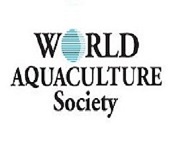Agriculture Sciences 2021
About Conference
EuroSciCon is delighted to invite you to attend “6th Edition International Conference on Agriculture-Foodsecurity-2021” which is going to be held during May 17-18, 2021 at Vienna, Austria. EuroSciCon is a World’s leading event Organizer conducting International conferences in USA, Europe, Asia-Pacific and Middle East.
Agriculture and Food Security 2021 is going to be held on the theme of Latest Agriculture research and Technology. Which extensively explores new trends in the field of Agriculture and Food.
Why to attend?
This is the best opportunity for an interaction with participants from the plant Genomics associations, plant science societies, Horticulture, Forestry, Agriculture, Agronomy, plant Genomics Academicians. It provides reporting and learning about the latest research on plant management and other relevant to plant Genomics, as well as for launching new applications and technologies and the effectiveness of various regulatory programs on Plant management towards Plantsciencebiology 2020 Conduct presentations, share knowledge, meet with current potential and eminent scientists, and receive name recognition at this two days event.
Our aim is to aggregate community and to create a platform for exchange of information on technological developments, new scientific innovations and the effectiveness of various regulatory programs towards Plantsciencebiology 2020. It provides a premier technical forum for expressing and learning about the advanced research and developments, as well as for launching new applications, technologies and to explore new trends in the field of plant Genomics.
Target Audience
• Academicians
• Researchers
• Pedologists
• Agronomists
• Geologist
• Students (Post graduates, Doctorates)
• Agricultural Advisors
• Plantation Companies
• Agricultural Consultants
• Private sectors
Market Analysis
Sessions & Tracks
Track: 01 Plant Tissue Culture and Plant Biotechnology
Plant tissue culture is the development of plant cells outside an unblemished plant. It relies upon keeping up plant cells in aseptic conditions on a reasonable supplement medium. The way of life can be maintained as a mass of undifferentiated cells for an all-inclusive timeframe, or recovered into entire plants. The distinctive procedures utilized in plant tissue culture: Plant Cell Growth | Plant Biotechnology event | Crops and Plant Breeding
Plant tissue culture is generally used to deliver clones of a plant in a technique known as micro-propagation. Plant Biotechnology is the innovation which is utilized for getting new item with high return and at quicker ways. Plant Bio-innovation is developing in the field of medication interfacing Plant Biotechnology and bioinformatics; the sub-atomic portrayal of restorative plants; sub-atomic cultivating; and leads from science, nanotechnology, pharmacology, horticulture, agriculture, Biomass and biofuels too.
Track: 02 Livestock Farming Technology
The traditional livestock industry is a sector that is widely overlooked and under-serviced, although it is arguably the most vital. Livestock provides much needed renewable, natural resources that we rely on every day. Livestock management has traditionally been known as running the business of poultry farms, dairy farms, cattle ranches, or other livestock-related agribusinesses. Livestock managers must keep accurate financial records, supervise workers, and ensure proper care and feeding of animals. However, recent trends have proven that technology is revolutionizing the world of livestock management. New developments in the past 8-10 years have made huge improvements to the industry that make tracking and managing livestock much easier and data-driven. This technology can come in the form of nutritional technologies, genetics, digital technology, and more.
Livestock technology can enhance or improve the productivity capacity, welfare, or management of animals and livestock. The concept of the ‘connected cow’ is a result of more and more dairy herds being fitted with sensors to monitor health and increase productivity. Putting individual wearable sensors on cattle can keep track of daily activity and health-related issues while providing data-driven insights for the entire herd. All this data generated is also being turned into meaningful, actionable insights where producers can look quickly and easily to make quick management decisions.
Track: 03 Plant Genetics and Epigenetics
Plant Genetics qualities assume a key job in the cutting edge hypotheses of heredity. There are different present day methods to grow hereditarily change plants, hereditarily built harvests. Epigenetics is the trading between the heredity and the earth through atomic components (DNA methylation, quality quieting, fluorescent in situ hybridization).
Track: 04 Plant Synthetic and Weed Biology Control
Plant Synthetic Science is a developing field that consolidates building standards with plant science toward the structure and generation of new gadgets. This developing field should assume an essential job in future horticulture for customary harvest enhancement, yet in addition in empowering novel bio production in plants.
The study of the establishment, growth, reproduction, and life cycles of weeds .It is concerned about the foundation development generation and spread or dispersal of weeds and in addition impact of condition on these procedures.
The exploration of weed science is imperative with a view to comprehend the survival system of weeds and their adjustment to exasperates soil condition, impact by ecological factors on circulation of weed species and attributes of weed that empower them to rival crops.
Track: 05 Agricultural Sciences
Agricultural science manages the advances in hereditary qualities, physiology, organic chemistry, biophysics, and sub-atomic science. Agriculture concerns procedures, including the. Use of agronomic research Farming biotechnology is a particular region of agrarian science including the utilization of logical instruments and procedures, including hereditary building, atomic markers, sub-atomic diagnostics, antibodies, and tissue culture, to alter living beings: plants, creatures, and microorganisms Agriculture is the development of creatures, plants, parasites and other life shapes for nourishment, fibres, and different items used to support life. Agribusiness was the key actualize in the ascent of inactive human progress, whereby cultivating of trained species made sustenance surpluses that supported the advancement of development.
The investigation of agriculture is known as agrarian science. The historical backdrop of agriculture goes back a huge number of years, and its improvement has been driven and characterized by extraordinarily unique atmospheres, societies, and innovations. Nonetheless, all cultivating for the most part depends on systems to grow and keep up the terrains reasonable for raising trained species. For plants, this generally requires some type of water system, despite the fact that there are strategies for dry land cultivating; peaceful crowding on rangeland is as yet the most widely recognized methods for raising domesticated animals. In the created world, mechanical horticulture dependent on huge scale monoculture has turned into the predominant arrangement of current cultivating, in spite of the fact that there is developing help for supportable agribusiness.
Track: 06 Plant Breeding and Molecular Breeding
Plant Breeding is the methods which are utilized for sub-atomic science to choose, or on account of hereditary change, to embed attractive characteristics into plants. Sub-atomic rearing, for example, marker helped choice and multiplied haploids are exceptionally valuable systems. There is plausibility that through plant reproducing can likewise use by natural development.
Track: 07 Horticulture and Landscaping
Horticulture manages the workmanship, science, innovation, and business of plant development. It incorporates the development of therapeutic plant, natural products, vegetables, nuts, seeds, herbs, grows, mushrooms, green growth, blooms, kelp and non-sustenance yields, for example, grass and elaborate trees and plants natural development. It likewise incorporates plant protection, scene rebuilding, scene and garden structure, development, and upkeep, and arboriculture.
Track: 08 Plant Ecology and Diversity
Plants occur over Earth's surface in very much characterized examples that are firmly corresponded with both atmosphere and the historical backdrop of the planet. Timberlands are the most imperative of these common networks from the angle of territory, carbon content, yearly carbon obsession, the cycling of supplement components, and impact on vitality and water spending plans, and in addition being the vital repository of biodiversity ashore. The broadest woodlands are the boreal coniferous backwoods of North America, Scandinavia, northern Europe, and northern Asia. The clammy timberlands of the tropics are the most differing, frequently containing upwards of 100 types of trees for every hectare (1 hectare = 2.47 sections of land) and at times some more.
Track: 09 Plant Science Research and Natural Products
Plant-determined (Botanical) Ingredients were among the simple first enhancing agents. Common colorants, plant juices for mitigating and security from creepy crawly bothers, and fragrant oils for bestowing aroma were altogether utilized in antiquated occasions. Generally, plants were the best way to deliver items for cleaning, saturating, concealing flaws and notwithstanding treating minor skin conditions.
Natural items are set up by natural combination, and have assumed a focal job to the advancement of the field of natural science by giving massively difficult targets and issues for engineered technique and strategies. Alkaloids are created by an extensive assortment of living beings, including microbes, parasites, plants, and creatures, and are a piece of the gathering of all regular and natural makeup.
Track: 10 Crop Research and Seed Science Technology
Crop research might be characterized as action coordinated to making the generation, promoting and utilization of business Crops more proficient and gainful. Consequently, edit research may include any or the majority of the accompanying: Plant Breeding, plant physiology and Biochemistry, trim assurance, social administration, stockpiling techniques research and preparing and items thinks about. The significance of plant rearing in the adjustment of yield plants to Canadian conditions is treated in a different article. Understood victories incorporate Marquis Wheat, Triticale, Canola and Lentils. Yields incorporate grain and Oilseed Crops, Forages, claim to fame crops, Vegetables, Fruits and Ornamentals.
Seed science is the analysis of the structure and advancement of seeds from the snapshot of treatment of the egg cell on the maternal plant until the point that arrangement of another plant from the seed. Seed science is partitioned into two segments carpology, studies the seeds and products of wild plants, and the other area thinks about the seeds of developed plants. Seed science is the hypothetical premise of seed growing. Agricultural seed science additionally expounds techniques for assessing and controlling seed material. The science is firmly associated with herbal science, natural chemistry, hereditary qualities, and other organic sciences.
Track: 11 Plant Morphology and Plant Metabolism
Plant morphology manages both the vegetative structures of plants, and additionally the conceptive structures. It incorporates plant improvement, flower morphology fertilization and treatment. Plant morphology gives an outline of the investigation of concentrate the outside type of plants. Plant digestion incorporates the complex of physical and concoction occasions of photosynthesis, breath, and the amalgamation of natural mixes.
Track: 12 Soil science and Soil-Plant Nutrition
The plants require water and minerals originate from the dirt, while carbon dioxide originates from the air. Macronutrients and Micronutrients are the fundamental components required by plants. Soil quality is a noteworthy determinant of plant circulation and development. Nitrogen is frequently the mineral that has the best impact on plant development. Plants require nitrogen as a segment of proteins, nucleic acids, chlorophyll. Natural nitrogen obsession (BNF) happens when air nitrogen is changed over to smelling salts by a catalyst called nitrogenise. Soil science is the investigation of soil as a characteristic asset on the surface of the Earth including soil development, order and mapping and soil disintegration.
Track: 13 Medicinal and Aromatic Plant Sciences
A considerable lot of the herbs and flavours utilized by people to season nourishment likewise yield valuable restorative mixes. All plants create concoction mixes as a component of their typical metabolic exercises, for example, phytochemistry. The utilization of herbs to treat malady is relatively all inclusive. Numerous herbs have indicated positive outcomes in-vitro while examines on some natural medicines have discovered positive outcomes.
This report gives an investigation of the developing natural medication industry and markets, geologically and by remedial region. The fate of plant-inferred tranquilizes all in all is talked about alongside the customary prescription.
Track: 14 Plant Nutrition and Crop-Soil Sciences
Plant Nutrients are the substance components that are fundamental to the sustenance of plant wellbeing. Plant Nutrients fall into three classes, which are all founded on the sum a plant needs, not the significance of the individual components. Each plant supplement plays out a vital job in plant development and advancement.
Plants can get supplements from the dirt, manures, or through individual supplement application. For instance, to expand plant blooming and fruiting, nursery workers can utilize PK Boosters to give plants more phosphorus and potassium; the two of which are fundamental to organic fruit/flower development and improvement.
Track: 15 Nanotechnology and Plant Sciences
The agronomic utilization of nanotechnology in plants (phyto-nanotechnology) can possibly modify traditional plant creation frameworks, taking into consideration the controlled arrival of agrochemicals (e.g., manures, pesticides, and herbicides) and target-particular conveyance of biomolecules (e.g., nucleotides, proteins, and activators). An enhanced comprehension of the associations between nanoparticles (NPs) and plant reactions, including their take-up, restriction, and action, could alter trim creation through expanded ailment obstruction, supplement usage, and product yield.
Track: 16 Plant Physiology and Biochemistry
Physiology ponders the living being when all is said in done, with the purpose of choosing how every constituent (e.g. the self-governing tissues) adds to its abilities and associations with the earth. Portion Plant Physiology welcomes duties that grow examinations of particles, cells, tissues, and organs to the whole plant level.
Plant agrarian creation is the explanation behind human sustenance. Plant quality advancement, which can be seen as a portion of plant regular science, makes a pledge to fight the approaching overall sustenance lack in view of the massive improvement of the aggregate people. The use of earth great herbicides and confirmation against viral or parasitic infiltration by techniques for quality development is of uncommon money related hugeness. Plant natural science is furthermore instrumental in duplicating valuable combinations of item plants.
Track: 17 Forest Science and Technology
The Forest Science is centered on the investigation of trees and woodland biological communities. Thusly, these courses include a considerable measure of logical learning and understudies inquire about. It is an unpredictable environment comprising fundamentally of trees that cradle the earth and bolster a horde of living things. The trees help make an alternate situation which, thus, influences the sorts of creatures and plants that can proceed in the woodland. Trees are a critical piece of nature. They clean the air, cool it on hot days, save warm around evening time, and go about as appealing sound safeguards.
Plants give a defensive shelter that diminishes the effect of raindrops on the dirt, subsequently diminishing soil disintegration. The layer of leaves that fall around the tree forestalls spill over and enables the water to deplete into the dirt. Roots help to hold the dirt set up. Dead plants deteriorate to shape humus, natural issue that holds the water and add supplements to the dirt. Plants give territory to various kinds of life forms. Flying creatures fabricate their homes on the parts of trees, creatures and flying creatures live in the hollows, creepy crawlies and different living beings live in various parts of the plant. They deliver substantial amounts of oxygen and take in carbon dioxide. Transpiration from the backwoods modifies the relative mugginess and precipitation in a place. Forest Science and Technology.
Track: 18 Plant Pathology and Plant-Microbe Biology
Plant Pathology is characterized as the investigation of the living beings and natural conditions that reason sickness in plants, the components by which this happens, the associations between these causal operators and the plant (consequences for plant development, yield and quality), and the strategies for overseeing or controlling plant infection. It likewise interfaces learning from other logical fields, for example, mycology, microbiology, virology, natural chemistry, bio-informatics, and so forth. Plant Pathologists are researchers worried about the comprehension of the dynamic procedures associated with the plant wellbeing. Their work is more research situated.
Plant microorganism experiences can be well disposed or unfriendly. Thickly colonized soil contains gainful mycorrhizal growths and rhizobia, which connect with roots and furnish plants with mineral supplements and settled nitrogen, separately, in return for carbon. By difference, plants are continually presented to a scope of contagious, bacterial and viral pathogens, and have advanced extraordinary guard components to battle these contaminations. We trust you will appreciate this determination of papers covering later logical revelations concerning these fascinating and differing connections.
Track: 19 Agricultural and Biosecurity
Farming biosecurity is an arrangement of measures intended to shield a property from the section and spread of vermin, illnesses and weeds. Ranch biosecurity is your duty, and that of each individual visiting or dealing with your property.
The objectives of the examination program are to recognize worries in the biosecurity divisions of harvest, domesticated animals and the earth utilizing hazard appraisal systems, characteristic signs and biomarkers and effect evaluation models with Centre esteem parts, for example, social, financial, social and ecological qualities. The exercises of the program incorporate hazard administration and improvement of subjective, semi-quantitative (classification and prioritization frameworks) and quantitative hazard appraisal models dependent on reconnaissance information, microbiological, epidemiological, business, climatic, transportation and sociological information.
Track: 20 Plant Science Biology and Environment Science's
Biology and Environmental Science is a general comprehension of living beings, earth conditions, and the connection between them. Examines are centered particularly around morphogenesis of plant cells and organs, versatile reactions of plants to conditions, early improvement of creature foetuses, advancement of mind morphology in vertebrates, and neural premise of bug conduct.
The connections between living life forms and situations, and to explain the dynamic changes in the biosphere the examination field incorporates the accompanying subjects between particular or intra-particular associations between amphibian life forms, nature and advancement of microorganisms, material cycle in the sea-going biological community, and poisonous quality of synthetic toxins to living beings.




































